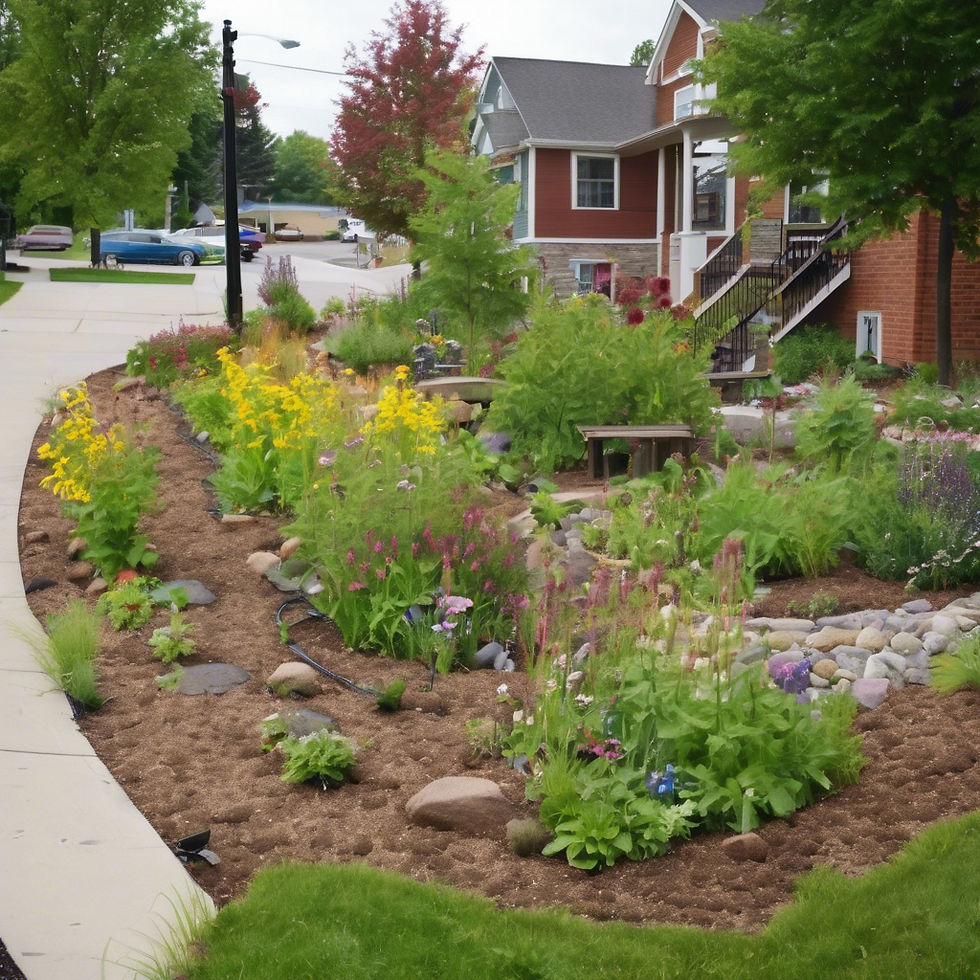How to Create a Rain Garden That Protects Your Home and Helps Your Community
- MrRemarkable
- Aug 11, 2025
- 2 min read

A Practical Guide from The Remarkable Hive
When heavy rains hit, water needs somewhere to go — and too often, it ends up overwhelming our streets, flooding basements, and washing pollution into rivers and lakes.One beautiful, effective, and eco-friendly way to help is by building a rain garden.
What is a Rain Garden?
A rain garden is a shallow, landscaped depression planted with flowers, grasses, and shrubs that are native or adapted to your area. It collects and absorbs rainwater runoff from roofs, driveways, patios, or lawns.Unlike a regular garden, it’s specifically designed to soak up water, filter pollutants, and prevent it from rushing into storm drains all at once.
Benefits of a Rain Garden
Reduces Flooding: Absorbs rainwater before it can overwhelm gutters or streets.
Filters Pollution: Removes oil, fertilizers, and litter particles from runoff.
Supports Pollinators: Native plants attract bees, butterflies, and beneficial insects.
Beautifies Your Yard: Adds seasonal color and texture.
Step-by-Step: Building Your Rain Garden
1. Pick the Perfect Spot
Choose a low area in your yard where water naturally flows or pools.
Place it at least 10 feet away from your home’s foundation.
Avoid areas with underground utilities or a septic system.
2. Size It Right
A good rule: Make your rain garden about 1/3 the size of the area that drains into it.
Example: If your roof drains 300 sq. ft. into the spot, aim for a 100 sq. ft. garden.
3. Shape & Depth
Dig a shallow basin, usually 4–8 inches deep, with gently sloped sides.
Create a flat bottom for water to spread evenly.
4. Choose the Right Plants
Center (wettest area): Plants that thrive in occasional standing water (e.g., Blue Flag Iris, Swamp Milkweed).
Middle ring: Moisture-tolerant plants (e.g., Black-Eyed Susan, Purple Coneflower).
Outer edge (drier zone): Drought-tolerant plants (e.g., Little Bluestem, Butterfly Weed).
5. Improve the Soil
Mix in compost and sand to help water soak in faster.
Avoid heavy clay soil without amendment — it holds water too long.
6. Mulch & Maintain
Use shredded hardwood mulch to prevent erosion and suppress weeds.
Water during the first growing season until plants are established.
Weed regularly and replace mulch as needed.
7. Enhance for Wildlife
Add a flat stone for butterflies to rest.
Include a bee hotel or small water dish for pollinators.
Quick Tip:
Wildflowers can absorb up to 30% more runoff than a standard grass lawn — and they require less mowing, watering, and chemical treatment.
Start Small, Think Big
Even a modest 5x10-foot rain garden can capture hundreds of gallons of stormwater each year. Imagine if every household in your neighborhood planted one — the difference in flood prevention, water quality, and beauty would be huge.
📍 Share your rain garden story or see community



Comments